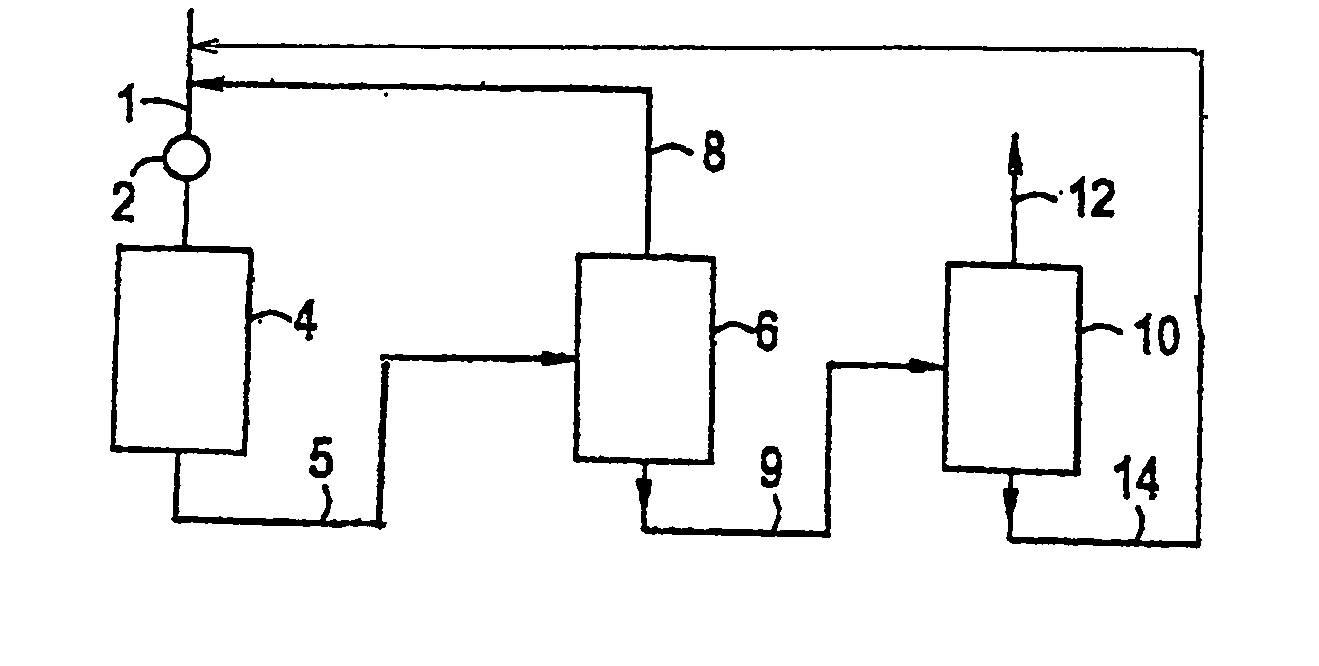Critical phase alkylation process
- Summary
- Abstract
- Description
- Claims
- Application Information
AI Technical Summary
Benefits of technology
Problems solved by technology
Method used
Image
Examples
Embodiment Construction
[0012] The present invention involves the critical phase alkylation of benzene over a cerium-promoted zeolite beta alkylation catalyst coupled with transalkylation of benzene and polyethylbenzene under conditions to control and desirably minimize the yield of byproducts in the reaction zone. The feedstock supplied to the alkylation reaction zone comprises benzene and ethylene. Typically, the benzene and ethylene streams will be combined to provide a benzene-ethylene mixture into the reaction zone. The benzene stream, which is mixed with the ethylene either before or after introduction into the reaction zone, should be a relatively pure stream containing only very small amounts of contaminants. The benzene stream should contain at least 90 wt. % benzene. Preferably, the benzene stream will be at least 95 wt. % benzene, and more preferably at least 98 wt. % benzene, with only trace amounts of such materials as toluene, ethylbenzene, and C7 aliphatic compounds that cannot readily be se...
PUM
| Property | Measurement | Unit |
|---|---|---|
| Temperature | aaaaa | aaaaa |
| Pore size | aaaaa | aaaaa |
| Pressure | aaaaa | aaaaa |
Abstract
Description
Claims
Application Information
 Login to View More
Login to View More - R&D
- Intellectual Property
- Life Sciences
- Materials
- Tech Scout
- Unparalleled Data Quality
- Higher Quality Content
- 60% Fewer Hallucinations
Browse by: Latest US Patents, China's latest patents, Technical Efficacy Thesaurus, Application Domain, Technology Topic, Popular Technical Reports.
© 2025 PatSnap. All rights reserved.Legal|Privacy policy|Modern Slavery Act Transparency Statement|Sitemap|About US| Contact US: help@patsnap.com



